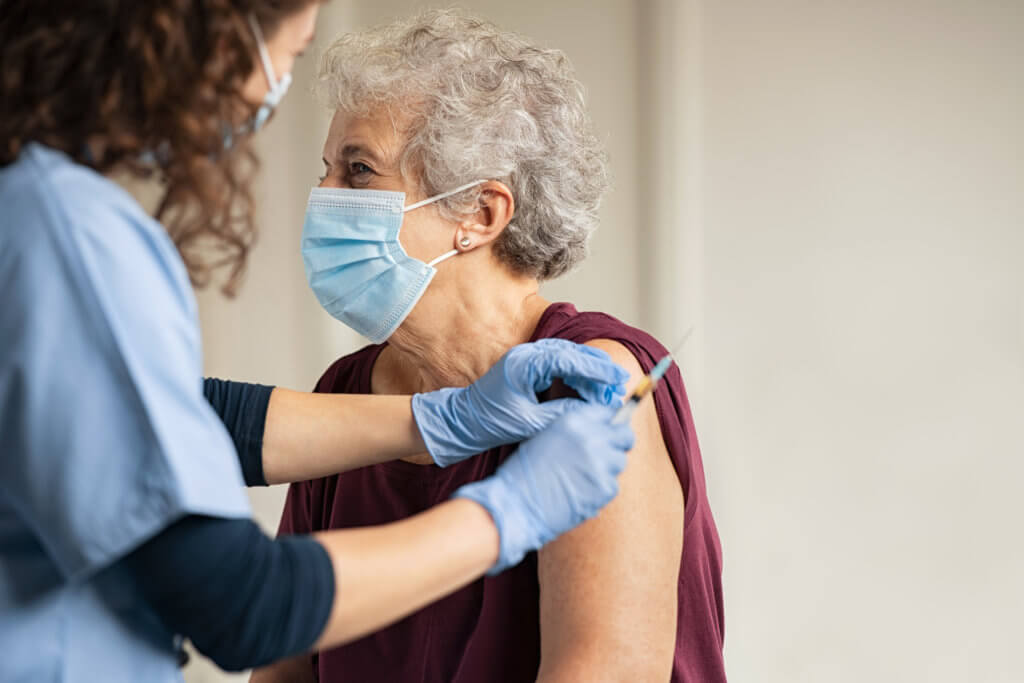OKINAWA, Japan — A bacteria in our digestive tract could weaken the body’s response to the COVID-19 vaccine. New research out of Japan suggests that the gut bacteria in charge of breaking down a sugar called fucose lowers the immune response after vaccination.
The COVID-19 mRNA vaccine helps train the immune system to recognize and prepare for an attack from the virus. One of the immune cells that fight on the frontlines is the T-cell. These activate by a specific strain of bacteria or virus and then multiply to fight the infection. However, the new study warns that high levels of fucose digestion in a person’s gut microbiome could reduce T-cell numbers.
The findings shed a light on how important the gut is to immune health as well as understanding why vaccination responses differ from person to person. It could also help with developing future vaccines that would provide protection against infectious diseases beyond COVID.
“Not everyone who gets the same vaccine receives an equal level of protection, but we still don’t really understand why people respond so differently,” says Hiroki Ishikawa, a professor at Okinawa Institute of Science and Technology Graduate University who leads their Immune Signal Unit. “If we can get to the bottom of what causes this variation, we could predict how an individual might respond to a vaccine, and perhaps find new strategies to promote the immune response.”
Scroll down to read 5 myths about vaccines

To study people’s gut microbiome, the authors had to examine samples of their feces. They also collected blood samples from 96 people who received their first and second doses of the vaccine a month apart. Researchers looked for a possible connection between the genes from immune cells in the blood and bacteria in the gut and a person’s T-cell and antibody levels.
The gut microbiome did not affect antibody levels. However, those with lower T-cell levels showed high bacterial activity involving fucose digestion. People with lower T-cell numbers had high expression of the FOS and ATF3 genes before vaccination. The genes are both expressed in blood immune cells, and they also code for proteins associated with AP-1 transcription factors. This larger group of protein are responsible for T-cell survival and activity.
People with high expression of both FOS and ATF3 before vaccination also had gut microbiomes with high activity in fucose digestion. The findings suggest the gut likely influences the immune system through a pathway involving FOS and ATF3.
“The mechanism is not yet proven, but we propose that fucose digestion leads to increased baseline expression of FOS and ATF3 in blood immune cells, which in turn weakens the response to the COVID-19 vaccine,” says lead author Masato Hirota, a PhD student at Okinawa Institute of Science and Technology Graduate University, in a media release. “It’s clear that the gut bacteria have an important impact on the overall health of the immune system.”
Finding out how exactly gut bacteria affect the gene expression of FOS and ATF3 is the next step for the research team. Using mice, they hope to discover the hidden connections between the gut, immune cells, and the overall immune response.
The findings appear in the journal Communications Biology.
5 myths about vaccines from StudyFinds’ Dr. Faith Coleman:
1. A healthy, full-term (37-42 weeks) infant begins receiving immunizations at 2 months-old.
Immunization starts at birth, with the hepatitis B vaccine. Infants who did not receive a birth dose should begin the series as soon as possible. Vaccinations for multiple diseases begin at two months of age:
- Rotavirus (RV)
- Diphtheria, tetanus, acellular pertussis (DTaP)
- Hemophilus influenzae type B (hib)
- Pneumococcal polysaccharide (PPSV23)
- Inactivated polio (IPV)
- Hepatitis B (HepB) — 2nd dose
2. When and which immunizations doctors administer to preterm infants depends on the infant’s weight and size.
Birth weight and size are not factors in deciding when or which vaccines to administer to a stable preterm infant, except for hepatitis B vaccination. In most cases, preterm infants (born before 37 weeks’ gestation) should receive vaccinations at the same chronological age and according to the same schedule as full-term infants and children. The full dose of each vaccine is used; it is not reduced or divided.
A preterm infant with a birth weight less than 2,000 grams (4.4 pounds) may not have an adequate response to Hepatitis B vaccine at birth. At the chronological age of one month, however, preterm infants, regardless of birth weight, are likely to respond as adequately as larger infants.
3. In children taking an antibiotic, immunizations should be delayed until 7 days after the child completes taking the antibiotic.
Antibiotics work against a disease a child already has. Vaccines provide protection against getting a disease. Antibiotics have no effect on viruses, or the production of antibodies against diseases. They have no effect on vaccines for viruses or for vaccines for bacterial illnesses.
4. Human papilloma virus (HPV) vaccination should be administered at age 9. It should not be administered after the age of 15.
HPV is the most common sexually transmitted infection (STI). There are more than 40 HPV types. All of them can infect both men and women. The types vary in their ability to cause genital warts. They can also infect other regions of the body, including the mouth and throat. Infection can progress to cancers of the cervix, vulva, penis, anus, and mouth.
HPV vaccination is routinely recommended at age 11–12 years, although it can start at age nine. Catch-up HPV vaccination is recommended for all persons through age 18 years if not adequately vaccinated. Immunization is a two or three-dose series depending on age at initial vaccination:
- Age 9–14 years at initial vaccination: Two-dose series at first dose with the second dose 6–12 months later. The minimum interval between doses is five months. If the second dose is administered too soon, it should be repeated.
- Age 15 years or older at initial vaccination: Three-dose series at first dose, with the second dose 1–2 months later, and the third dose six months after the first dose. There should be a minimum interval of four weeks between dose one and dose two. The interval between dose two to dose three should be 12 weeks. Repeat the last dose if there is fewer than five months between the first and third doses.
- Interrupted schedules: If the vaccination schedule is interrupted, the series does not need to be restarted.
5. Varicella vaccine is administered at 6 months-old and again at 6 years-old.
Varicella vaccine is a two-dose series starting at age 12–15 months, then at 4-6 years. Dose two may be administered as early as three months after dose one.
For dose one in children between 12–47 months, it is recommended that the MMR (measles, mumps, rubella) and varicella vaccines should be given as separate injections. Some parents choose to give both vaccines in a single injection using a mixed solution (MMRV).

